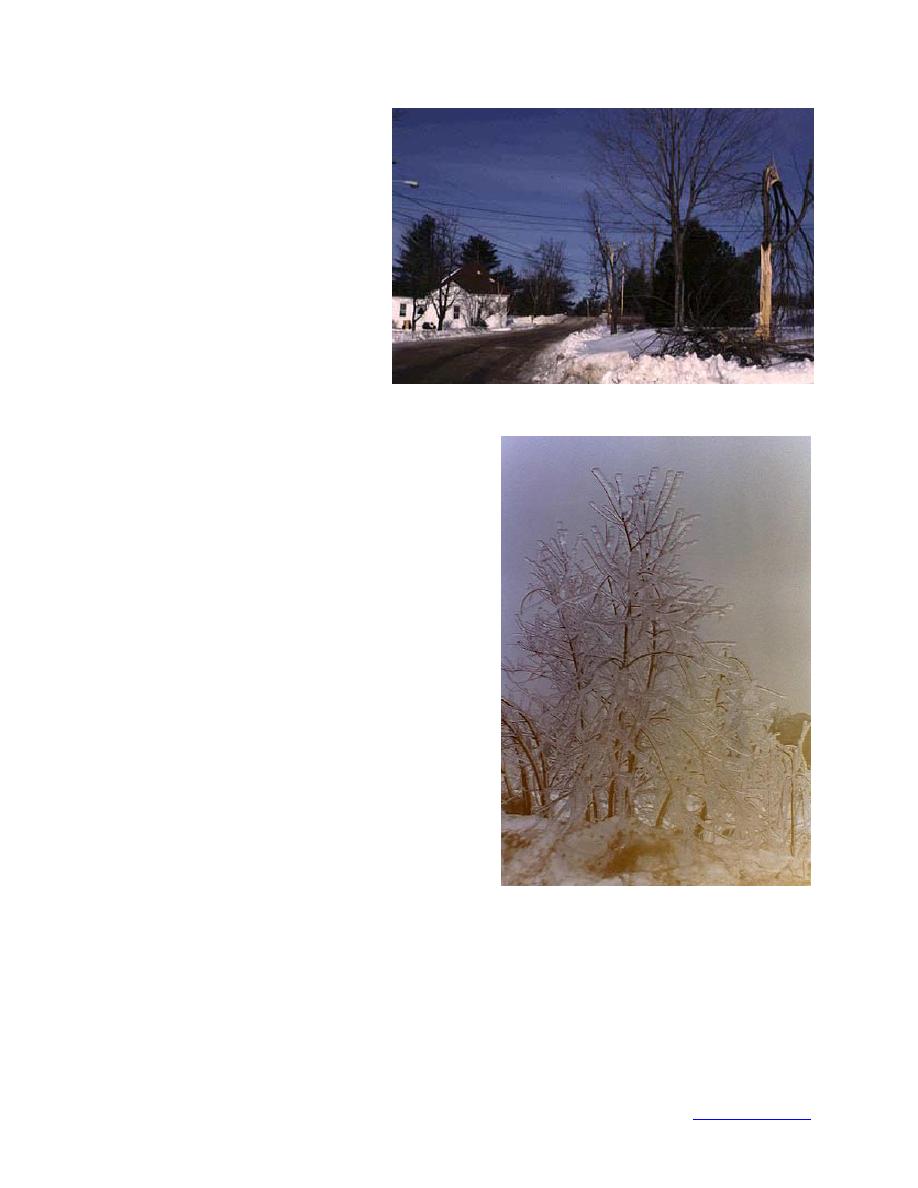
non and Vienna, was about 0.2 in. at
an elevation of 500 ft. East of Bang-
or near Deblois ice loads of about 1
in. damaged the trees shown in Fig.
14e. The northern 40% of the state
had frozen precipitation in the form
of ice pellets throughout most of the
storm. Heavy loads on flat and low-
pitched roofs in this region were
from the accumulation of ice pellets
from this storm on top on previously
fallen snow. However, even in re-
gions where the precipitation at low-
er elevations was in the form of ice
a. Minot at 330 ft (photo Mulherin).
pellets, at higher elevations the rain-
drops may not yet have frozen and there could
be local damage from
freezing rain in higher terrain.
6.1.2 Distribution system
Damage to power distribution lines, which
serve individual houses and businesses,
occurred throughout the region hit by the ice
storm. Distribution lines were damaged prima-
rily by trees leaning on the wires and by broken
branches and trees falling on wires, pulling the
wires down or breaking crossarms or poles.
(Fig. 15). Because a) homeowners and munici-
palities plant trees and resist tree trimming and
removal for aesthetic reasons, and b) trees are
ideal collectors of ice, distribution line outages
often occur early in an ice storm. These outages
tend to be long-lasting because a) damaged
trees must first be removed to gain access to
the downed line and b) all portions of a circuit
must be repaired before any customers on
that circuit can be brought back on line. In the
b. Gray at 400 ft (photo John Jensenius,
rural areas in Maine, New Hampshire, and
NWS).
Vermont, where miles of distribution line may
serve only a few customers, outages were pro-
Figure 14. Tree damage in Maine.
longed. The number of customers without pow-
er and the duration of outages because of problems in the power distribution system are likely to
be closely tied to the closeness of the association between people and trees in the region and the
extent of the storm, rather than with the magnitude of the ice load. An evaluation of the outage
pattern in the distribution systems in all three states might identify districts in which additional
22
Back to contents page




 Previous Page
Previous Page
